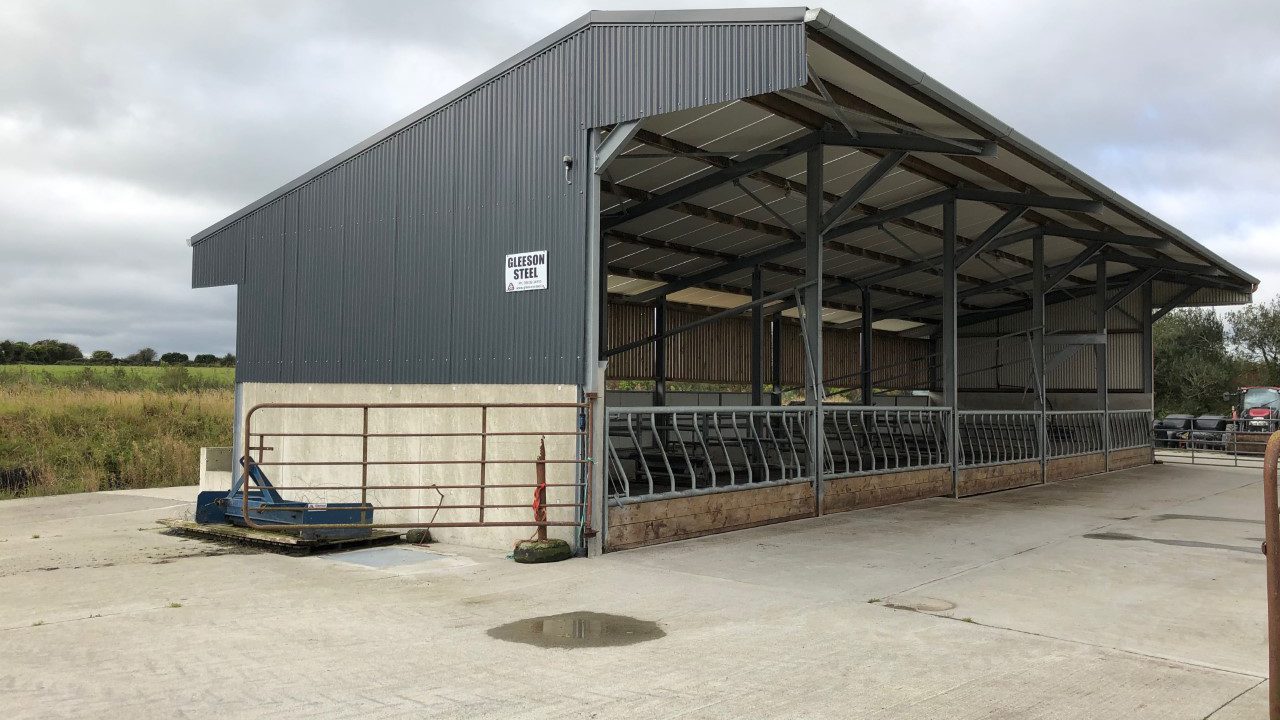Although grass is aplenty on many farms, poor ground conditions are preventing cattle from grazing these pastures.
This, in turn, has led to many farmers being forced to house their animals due to the heavy and almost persistent rain experienced across the country.
Therefore, farmers should turn their attention to their winter housing facilities and make sure they are up to scratch.
Farmers should pay careful consideration to the size of the shed available, as overcrowding can lead to a significant reduction in animal performance.
Drystock sheds should be cleaned out by now and slatted tanks should be empty. Furthermore, sheds should be power washed thoroughly and disinfected.
Floor space
According to Teagasc, suckler cows housed in slatted houses require 2.5-3.0m²/cow, while cattle weighing over 275kg require 2.0-2.5m²/animal. Weanlings or cattle weighing under 275kg are required to have 1.2-1.5m²/animal.
Lighter animals under 275kg, according to Teagasc, that are housed in straw-bedded sheds, require 2.4-3.0m²/animal with heavier cattle, over 275kg, needing 4.0m²/head.
Feed space
If pens are stocked to the maximum, then it is important to ensure that there is enough feeding space for each animal.
In order to get the greatest liveweight gain from your cattle over the winter months, it is advisable to group animals in accordance to weight.
This will stop heavier animals from bullying lighter animals for space at the feed face. In addition, significant gains can be made in finishing enterprises when all of the animals in a group are of the one size.
Water
Along with adequate feed space, cattle should always have access to fresh, clean water at all times.
Farmers should check their water troughs to make sure they are working properly as the ballcock can easily break causing the water to overflow.
If farmers are looking to replace their water troughs, installing ones that can be emptied by the pull of a lever are extremely useful to ensure cattle have access to fresh clean water at all times.

The water trough can be emptied by pulling the black lever, ensuring the cattle have access to clean water
Ventilation
Farmers should ensure that there is a continual flow of fresh air throughout the shed. In addition, draughts should be kept to a minimum to prevent cattle from getting chills or pneumonia.
By making simple modifications, such as removing some of the side sheeting of sheds, fresh air can then be circulated around the shed.

A high-pitched roof with airspace at the back of the unit allows for good airflow throughout the shed, reducing the risk of respiratory diseases
Research has shown that animals perform better in well-ventilated sheds, as they are less likely to develop respiratory infections or pneumonia. Animals may not always show signs of pneumonia.
However, suspect animals should have their temperature recorded and treated accordingly if needs be.
Allowing weanlings or autumn-born calves to venture outdoors for a period will also help to reduce the risk of pneumonia.



